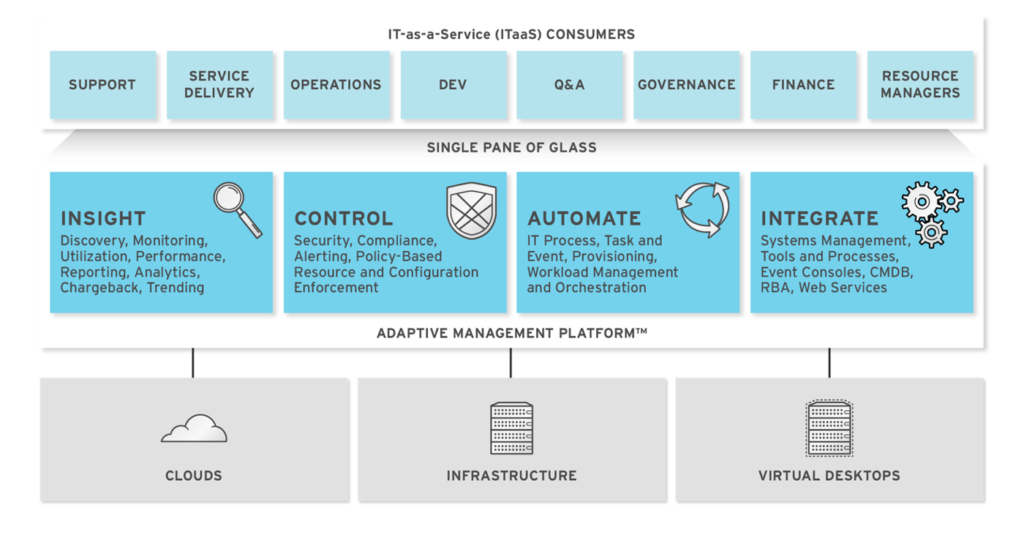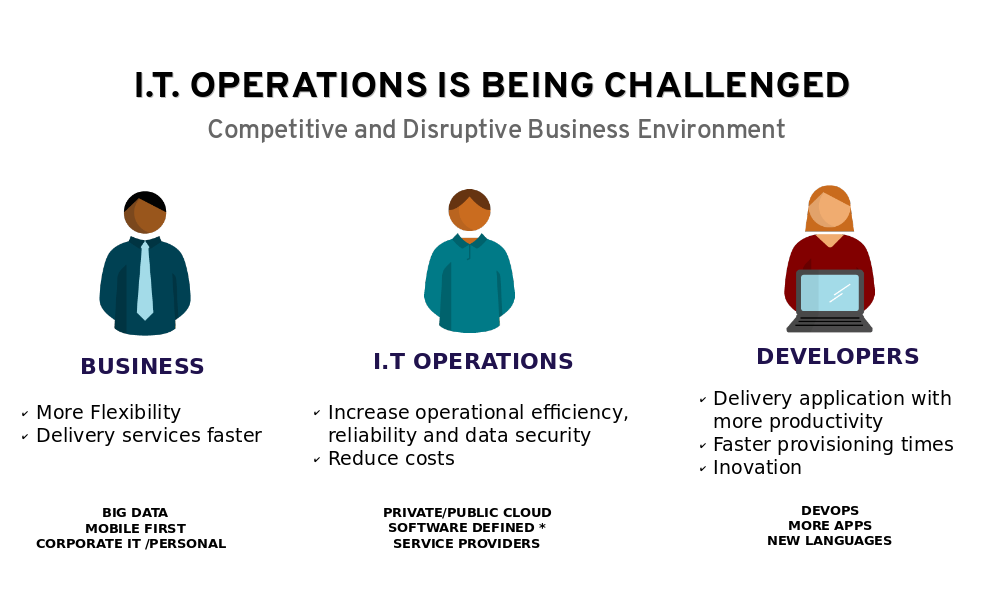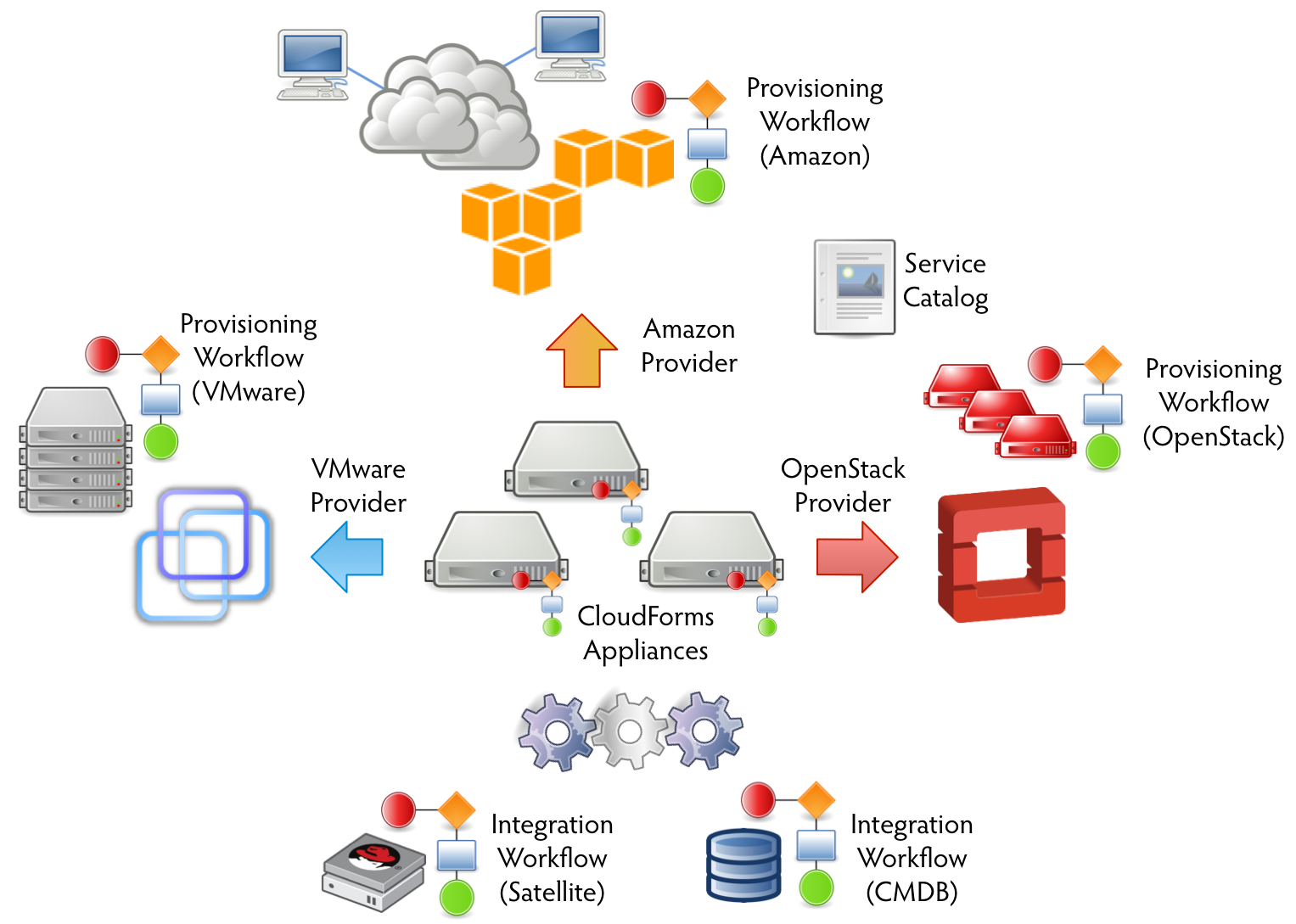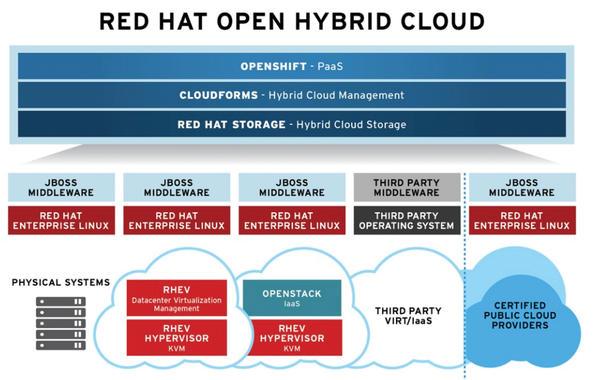Before I start talking about IT and how you can manage, control, and optimize your Hybrid IT infrastructure, I propose that we reflect directly on your living room, where you usually watch TV, movies, listen to music, play video games, etc. Even if you do not enjoy this type of entertainment, you know that for each of these devices, it is common to use a remote control allowing you to switch between them, manage them, and control all of your favorite programming. While these devices are converging to an all-in-one architecture, they are truly multi-functional. We've learned how to handle remote controls at a very young age and it's the reality we live in. In this case, you are faced with heterogeneous devices and various remote controls, where the number of controls increases as you acquire new devices. It is difficult to have to manage the complexity of a simple task that is to manage your schedule, operating multiple devices, through different controls, with numerous features, and different vendors. Products and vendors bring specific features, use different nomenclature, and provide some features which may or may not be compatible with each other. Going beyond, some of these features made available by vendors, will not even be used throughout the lifetime of these devices, a real waste!

Picture 1 - Managing many devices with many remote controls
Considering this scenario, you might be wondering: What is the relationship of the complexity of having to deal with various entertainment devices and remote controls with your IT infrastructure? And what does this have to do with cloud computing or Hybrid IT?
Traditional and Hybrid IT
 Picture 2 - Hybrid IT model
Picture 2 - Hybrid IT model
The traditional IT that we have known for decades has converged to a model that the market has conventionally embraced Hybrid IT. In this emerging model, enterprises will continue to have their conventional workloads with bare metal and virtualized servers, however, consuming IT services in the private cloud through Infrastructure as a Service (IaaS) and Platform-as-a-Service (PaaS) technologies available for products such as the OpenStack and OpenShift, respectively. In addition, these companies will be able to consume and host their services in the public cloud, through cloud providers such as Amazon or Microsoft Azure, transforming the traditional IT asset acquisition model into a consumption model for IT operational services.
We are talking about a more flexible IT infrastructure, prepared to meet the new demands of the market and potentiate the digital transformation, where companies are evolving to become truly digital businesses. These digital businesses require an agile IT model whose resources are massively scalable so that the cloud consumer can use computing resources on demand, pay for use only, and drive innovation. The diagram below describes the capabilities of Red Hat CloudForms. Its features are designed to work together to provide robust management and maintenance of your Hybrid IT.
Picture 3 - Red Hat CloudForms capabilities to provide a robust management
The dominant problem in the technology market
The dominant problem in the technology market these days is the friction between the line of business, IT operation, and developers. The business is concerned about differentiation in the market, delivering better applications and services to its customers, always ahead of its competitors. On the other hand, the operation is concerned with the availability, safety, compliance, and reduction of operating costs. Finally, developers want agility in delivering application development environments and investing in innovation. Usually, there is a divergence between these two groups because developers want to be free to use the latest features and no limitations of technologies.
Picture 4 - IT Operations challenges and the dominant problem
Despite the differences and friction between the areas, all are together to meet the needs of the business. This is where CloudForms can help!
What is CloudForms and how can it help?
CloudForms is an Open source management platform for Hybrid IT. The platform is designed to manage small or large environments and supports multiple infrastructure providers, public or private clouds and containers. You'll be able to manage your local infrastructure, instances on Amazon, Microsoft Azure, or other compatible cloud providers in addition to your applications. It can automate tasks and create catalogs of services that can be consumed on-demand by developers, all segmented by department, project and with quotas. Access and management will be through a single interface, increasing operational efficiency and reducing costs in the delivery of infrastructure and enterprise applications. CloudForms is developed based on upstream project ManageIQ and is available in the format of appliance for Red Hat Virtualization, VMware, OpenStack, Amazon, Microsoft Azure, Google Cloud or through containers images for Atomic Host and Openshift.

Picture 5 - CloudForms integration and workflow
Market research shows that 60% of CIOs will have to reduce their infrastructure costs by 2017 to fund business innovation. Regarding the private cloud, 47% of companies already have two or more deployments in production. In addition, 74 percent of companies will buy solutions to manage the hybrid cloud and the delivery of next-generation applications. [1]
Some of the key features of CloudForms:
- Self-service portal: Create catalogs of services that can be consumed by end-users and operators. Lower time for infrastructure delivery and more operational efficiency.
- Billing: Get visibility into the operational cost of each component of your IT infrastructure through the billing feature. Generate chargeback/showback reports by department, project, etc.
- Management and Control: Multiple tenant support, quota, a creation of approval cycles, instance lifecycle management, and policy creation.
- Performance Analysis: Capture metrics from your VMs, instances, containers, and hosts and gain visibility into the usage and consumption of computing resources.
- Strategic reports: Through the metrics collected, generate "right-sizing" reports for resource optimization and capacity planning.
- Ansible support: The combination of CloudForms and Ansible is a powerful tool for automating various workflow tasks.
- Security: Scan your VMs, hosts, and containers based on pre-established compliance policies.
- Monitoring: Monitor events and logs of hosts and instances, view through timelines and various filters available.
- Integration: Systems Management, Tools and Processes, Event Consoles, Configuration Management Database (CMDB), Role-based Administration (RBA) and Web Services.
Important features or resources to highlight:
- Scalable architecture: You can segment the environment by regions and zones, and replicate VMDBs to ensure data redundancy. Learn more about model architectures in the official documentation.
- Operational Efficiency: IT infrastructure management is centralized through a single web interface. Less complexity and more IT staff time to devote to strategic activities of the organization.
- Agentless: Does not require the installation of an agent to manage your VMs, instances, containers, and hosts.
- Customizable Web Interface: Create custom dashboards with strategic information for your team, with charts, performance reports, and events. Customize the login interface and add your company logo.
- REST API available: Through a REST API, developers can easily integrate ManageIQ with other enterprise applications and facilitate the automation of tasks performed by system administrators through scripts.
Red Hat believes that an open hybrid cloud gives businesses flexibility, control, and choice—and leaves you open to innovation. It makes the most of your existing resources while allowing systems, applications, and data to work together seamlessly across a public or private cloud. Red Hat is the only company that can deliver truly open hybrid cloud technology. [4]
 Picture 6 - Red Hat open hybrid cloud vision
Picture 6 - Red Hat open hybrid cloud vision
Open hybrid cloud is our vision for the future of IT, and it spans everything we do. The Red Hat CloudfForms will be a key tool in the journey to the hybrid cloud.
References:
[1] IT conventional or Agile? https://www.redhat.com/files/resources/ptbr-itwob-conventional-agile-it-infographic-INC0242254.pdf
[3] Mastering CloudForms Automation, Peter McGowan, O'Reilly 2016
[4] Open hybrid cloud: Red Hat's vision for the future of IT: https://www.redhat.com/en/blog/open-hybrid-cloud-red-hats-vision-for-the-future-of-it
Red Hat Mobile Application Platform is available for download, and you can read more at Red Hat Mobile Application Platform.
Last updated: February 6, 2024